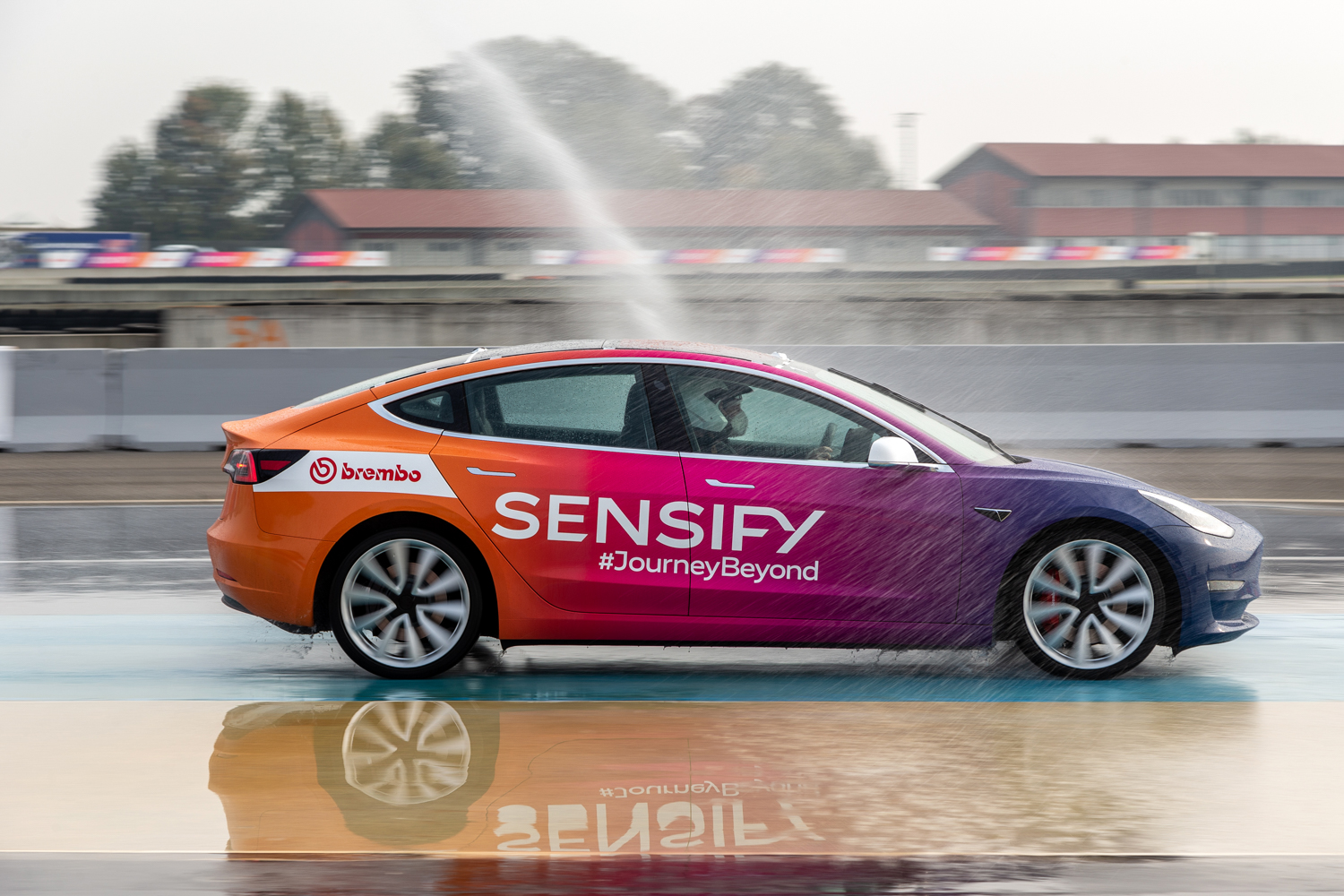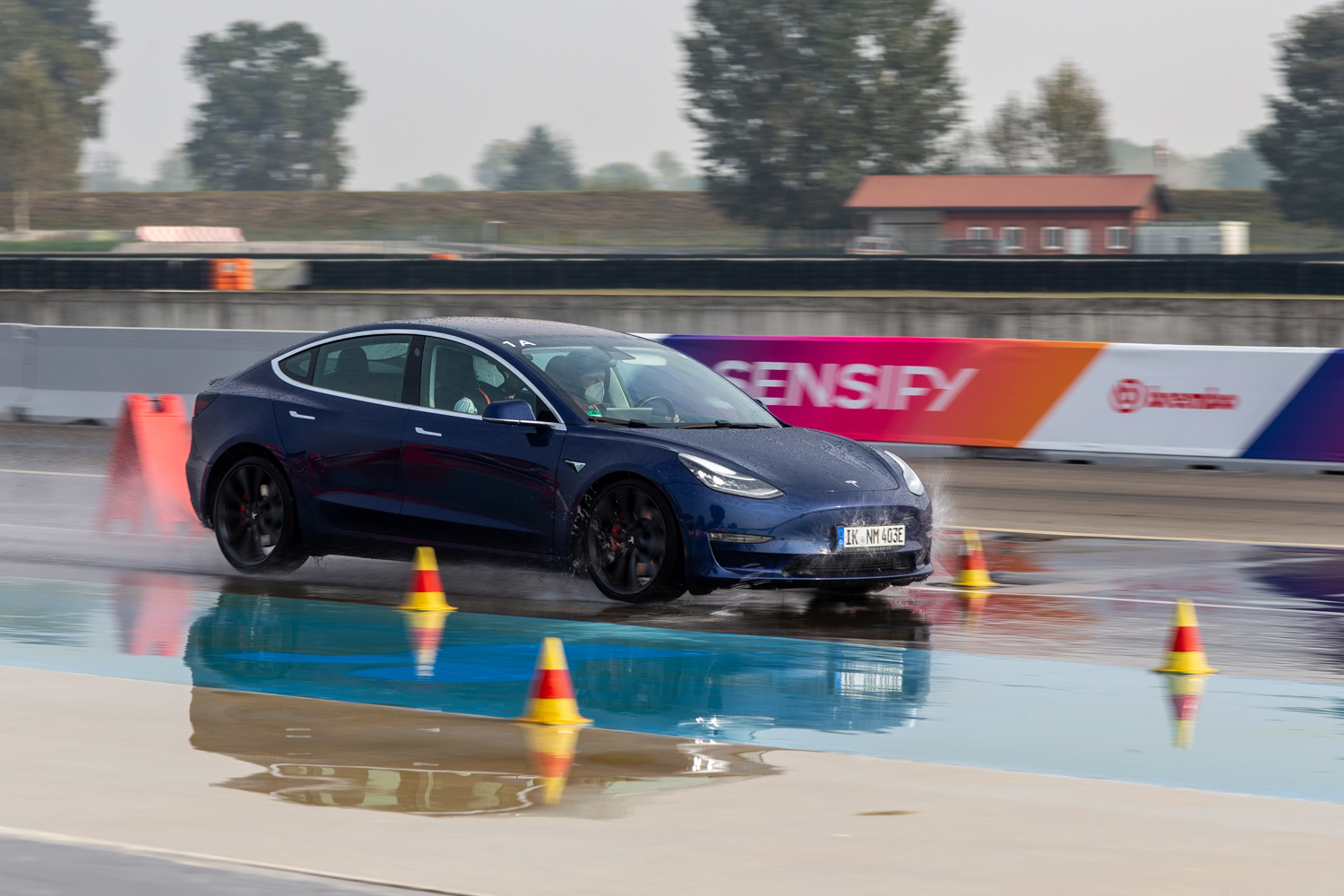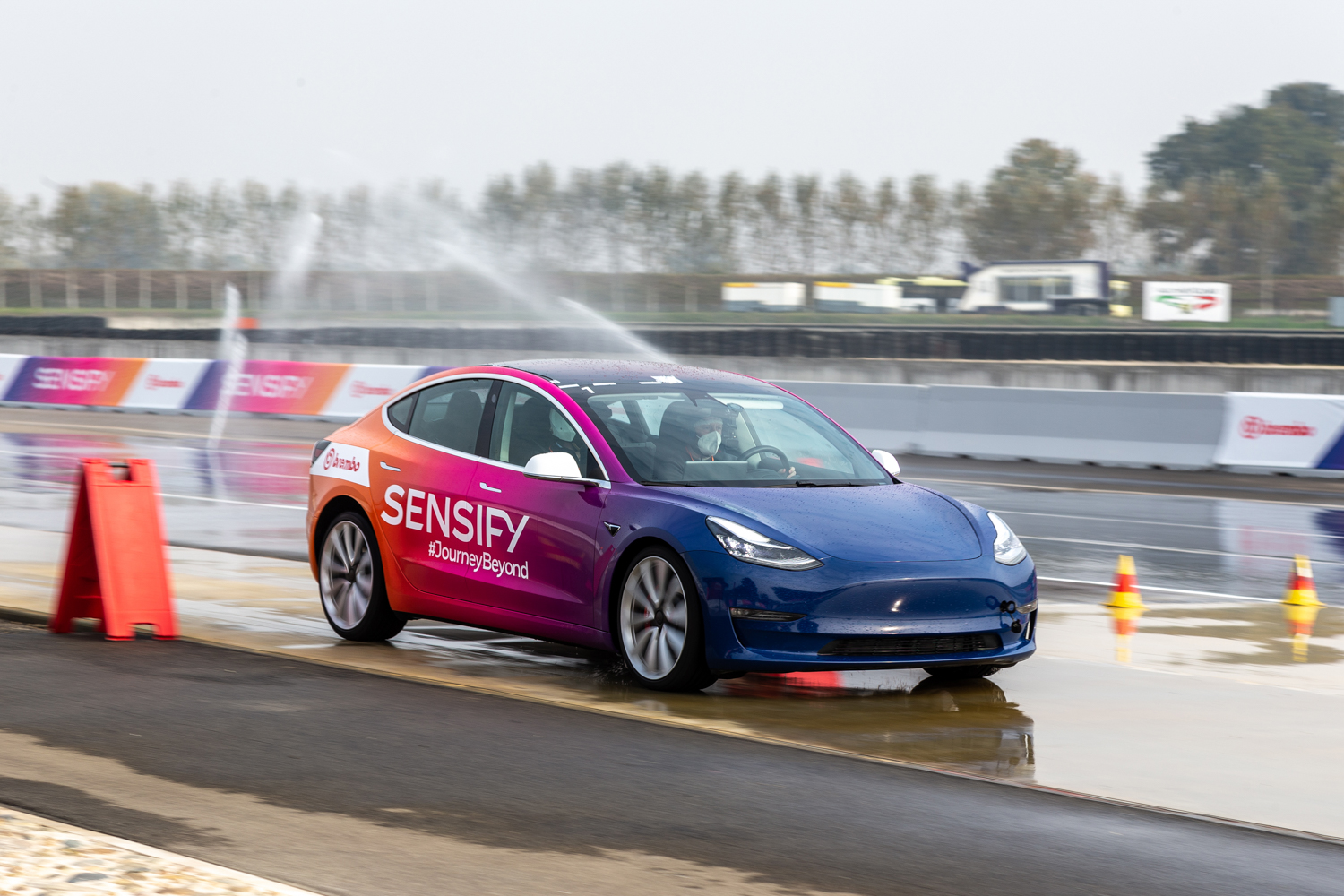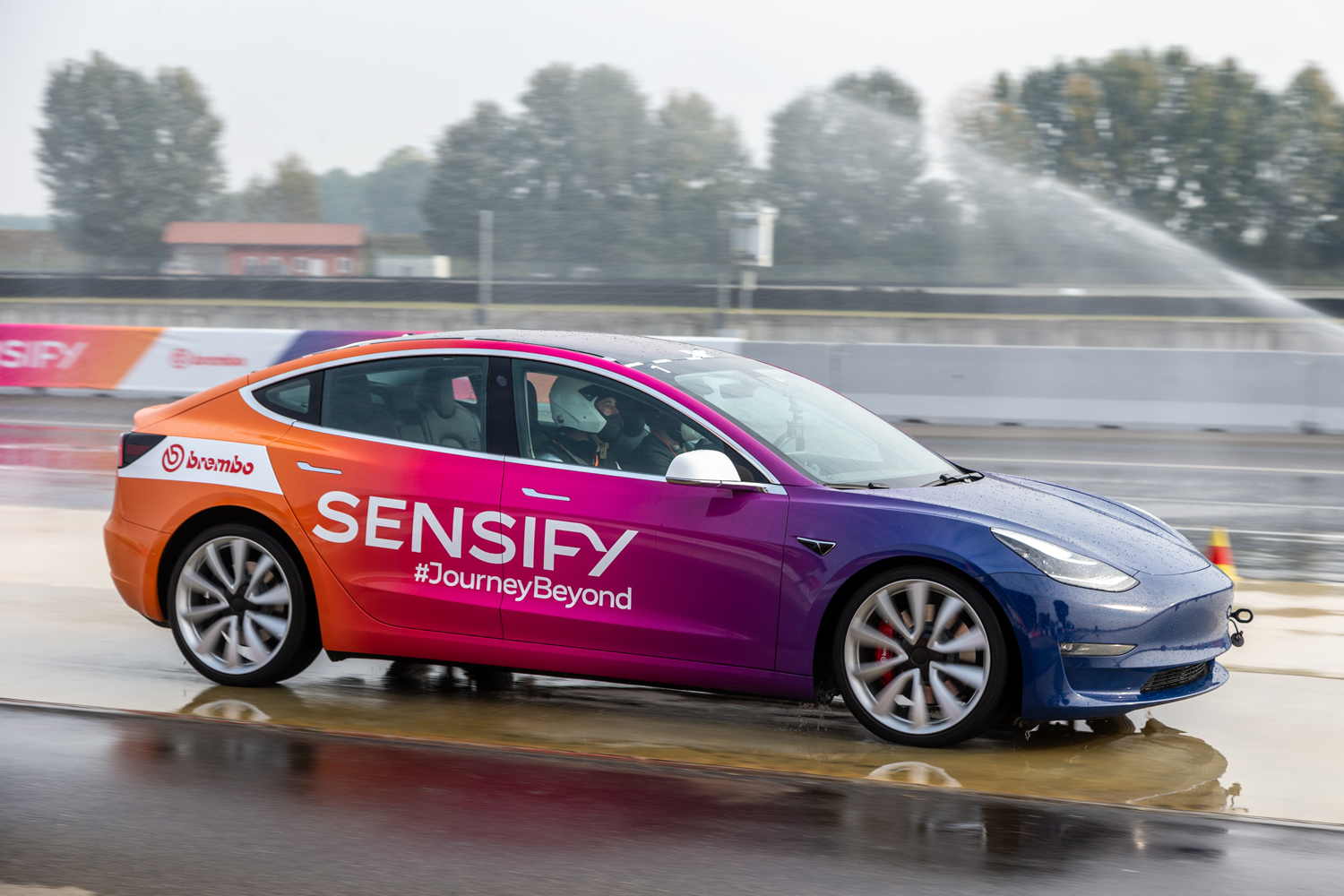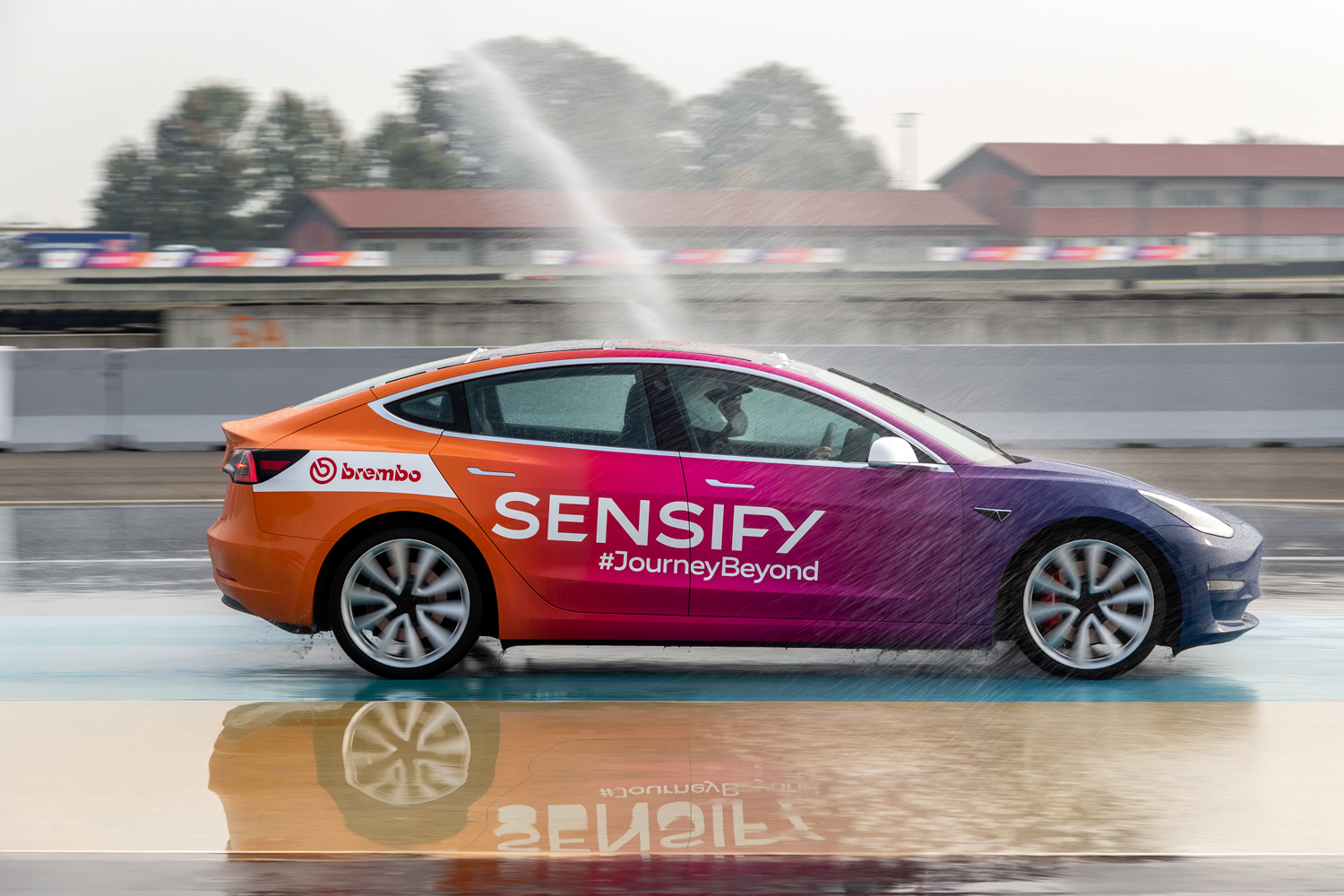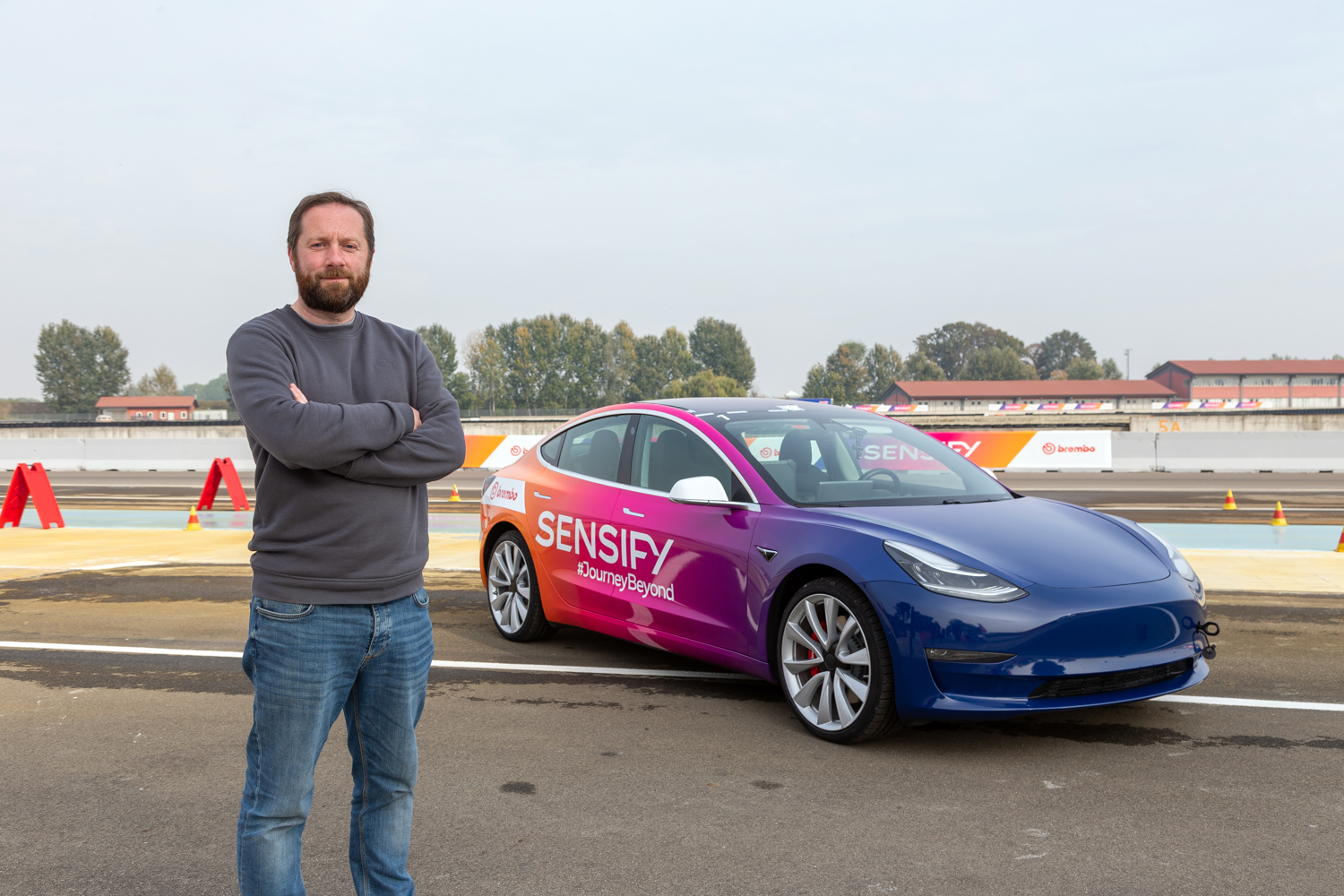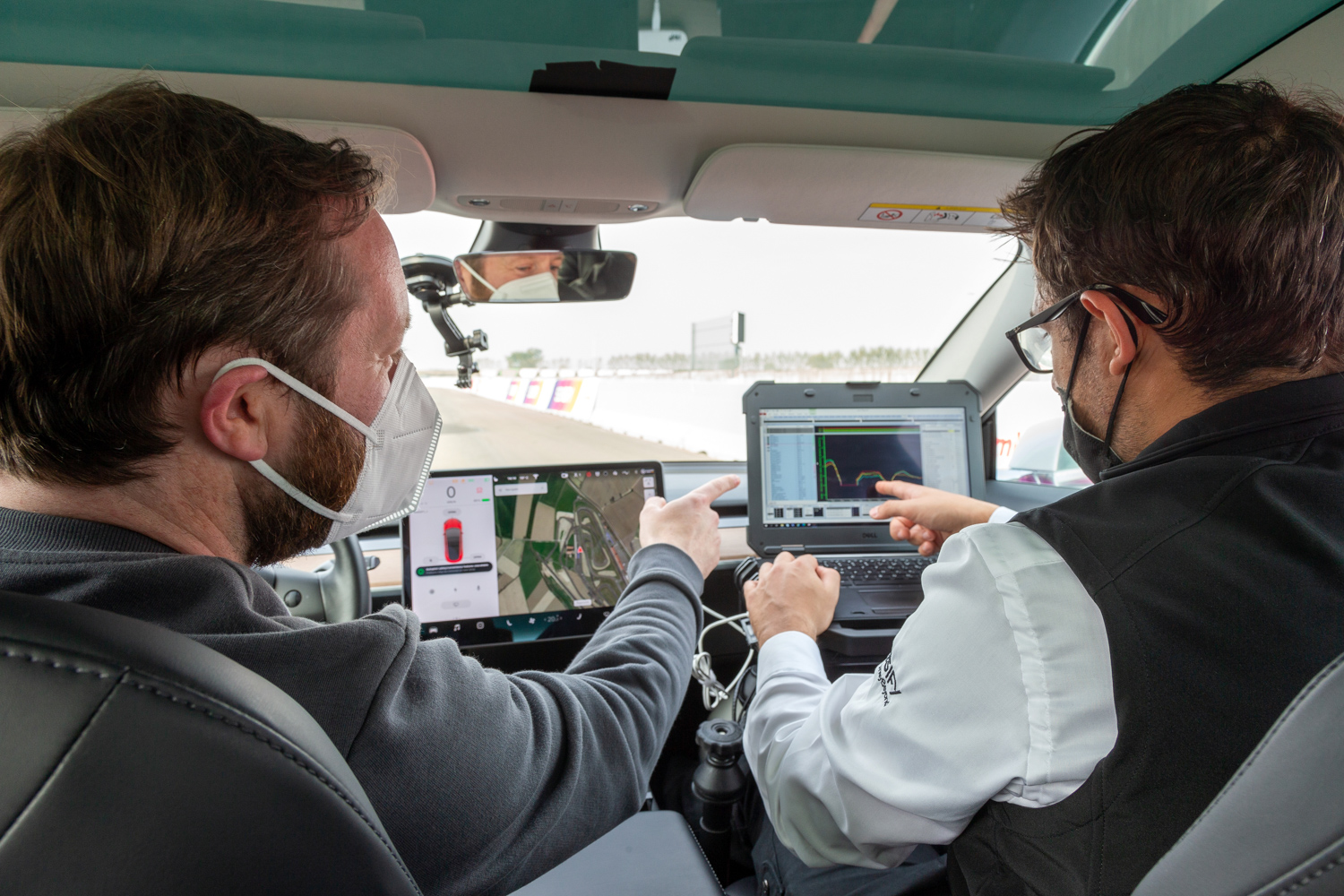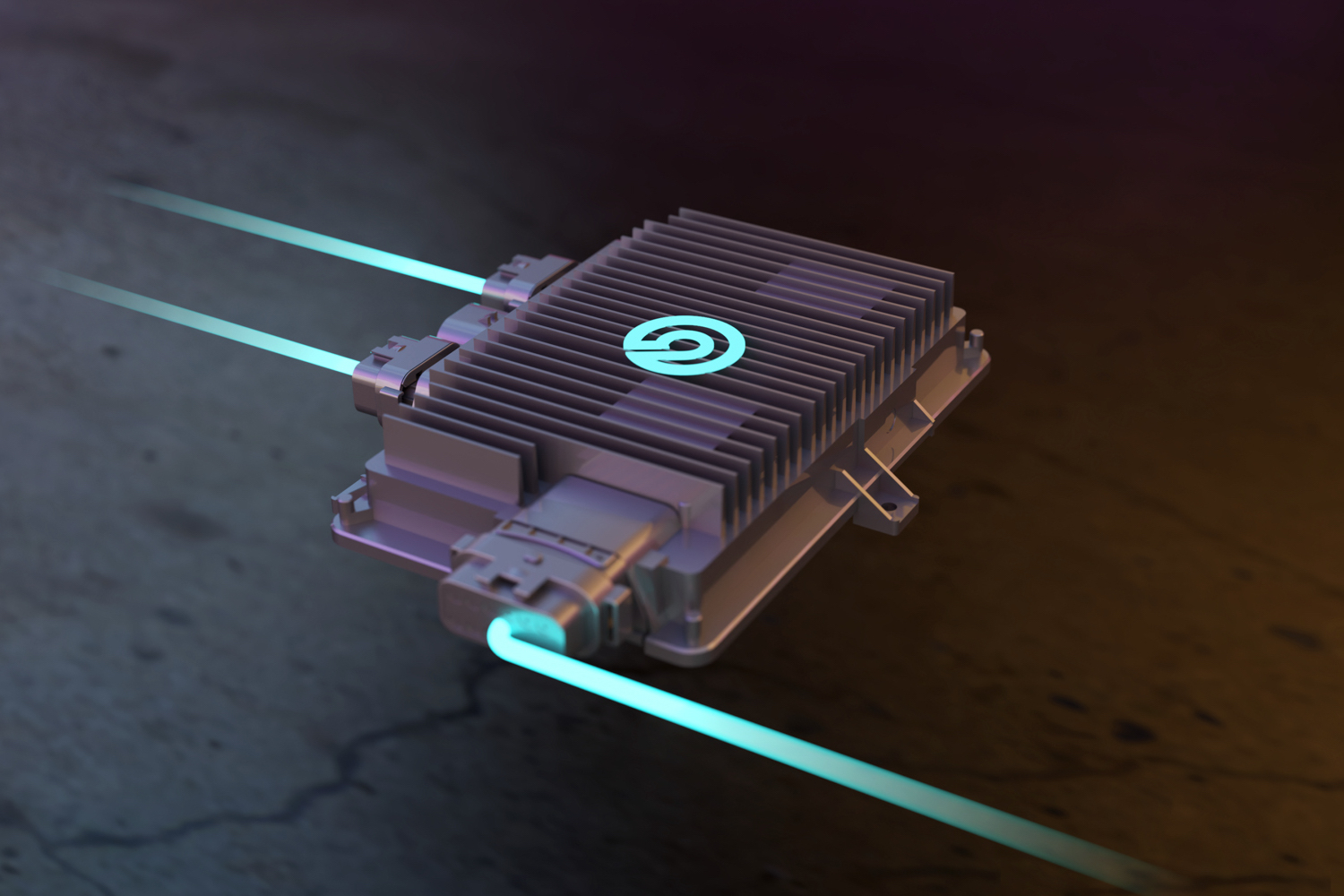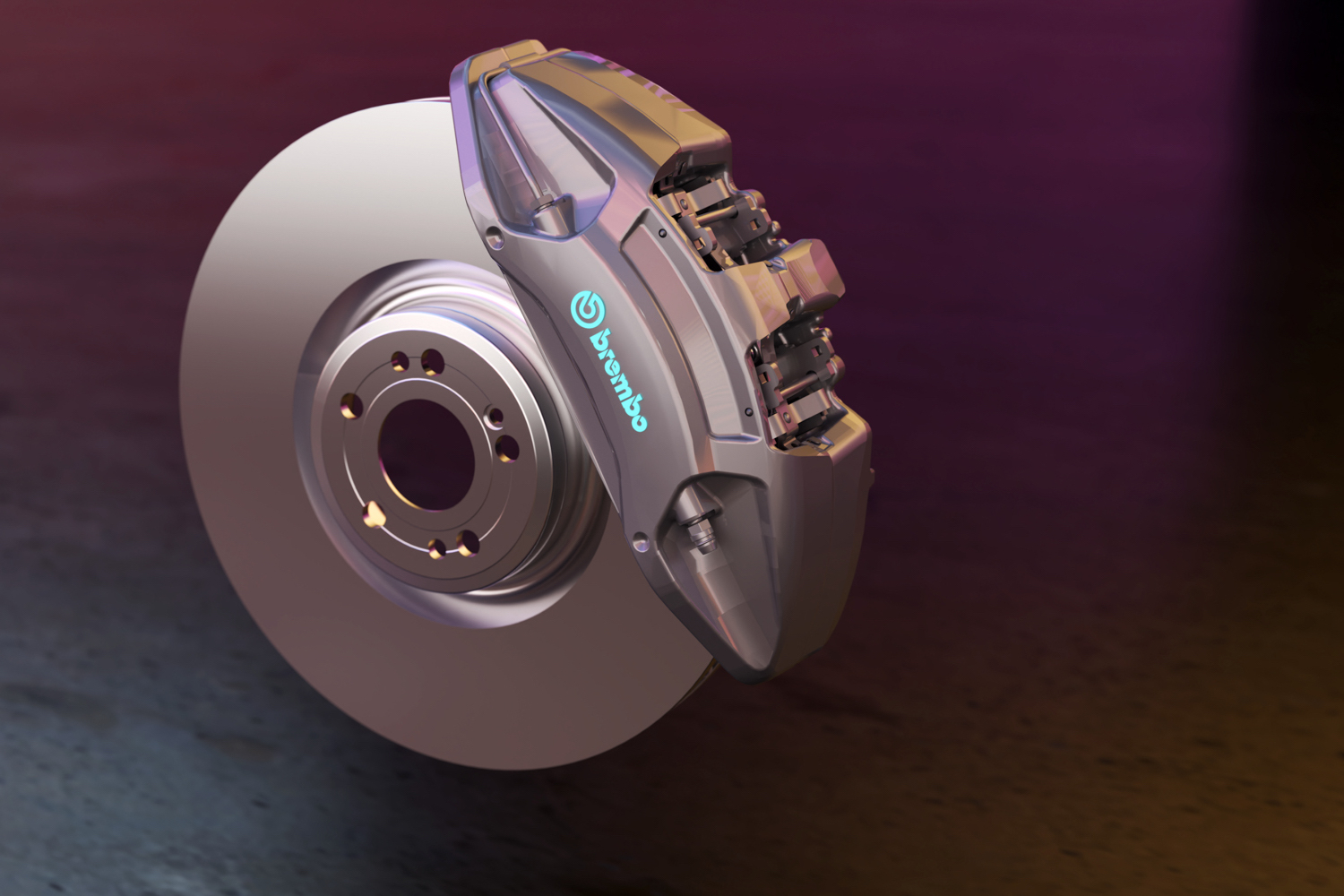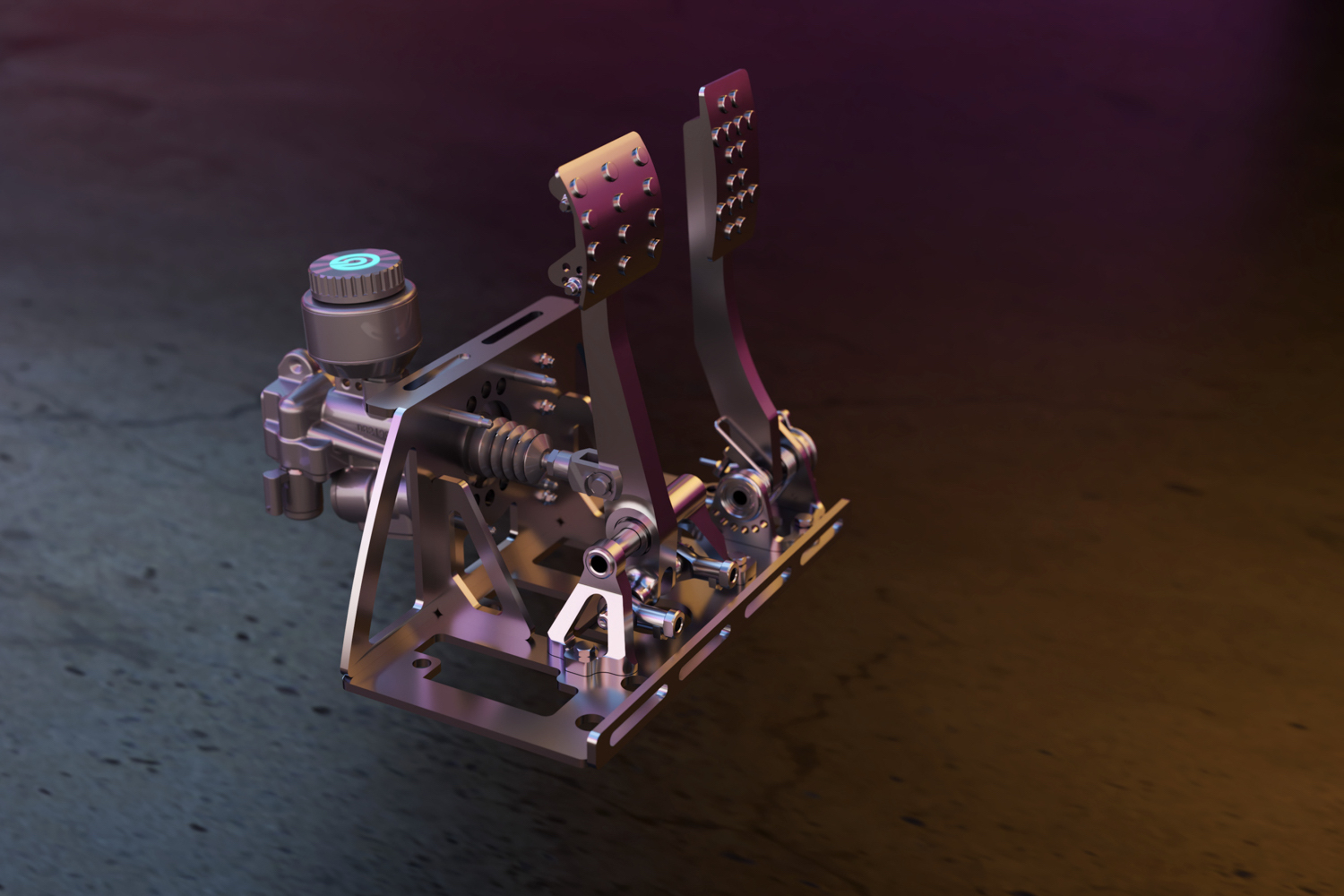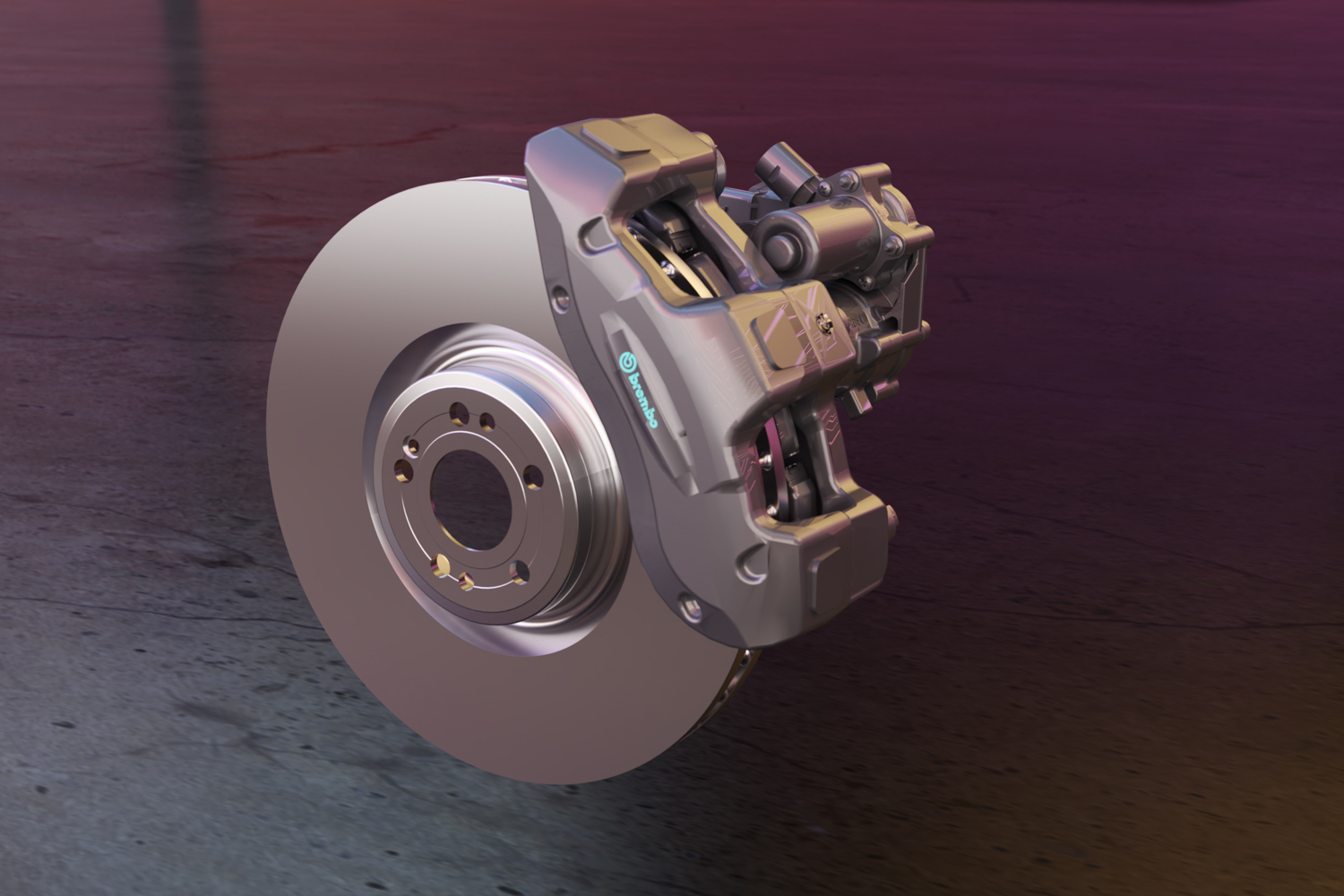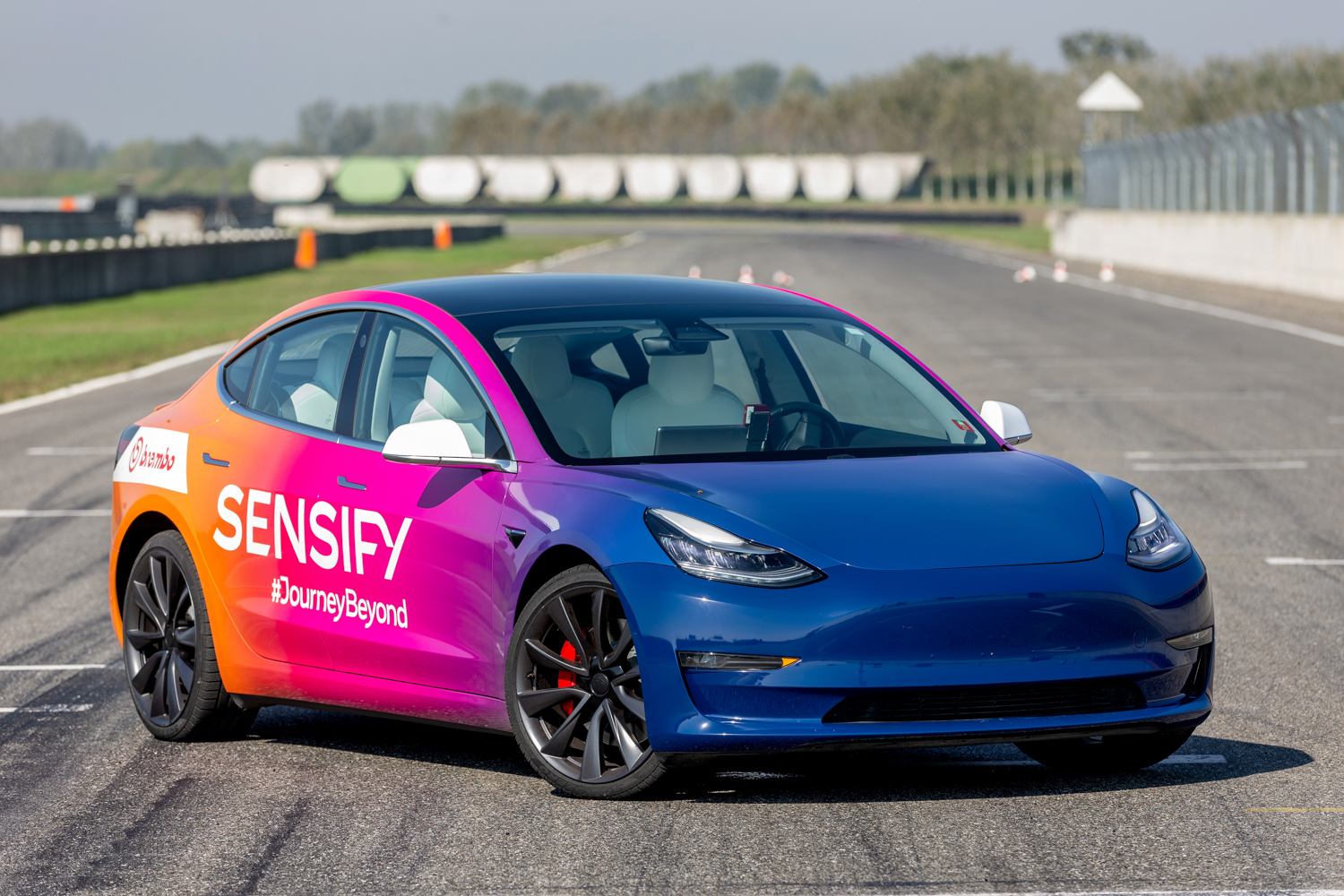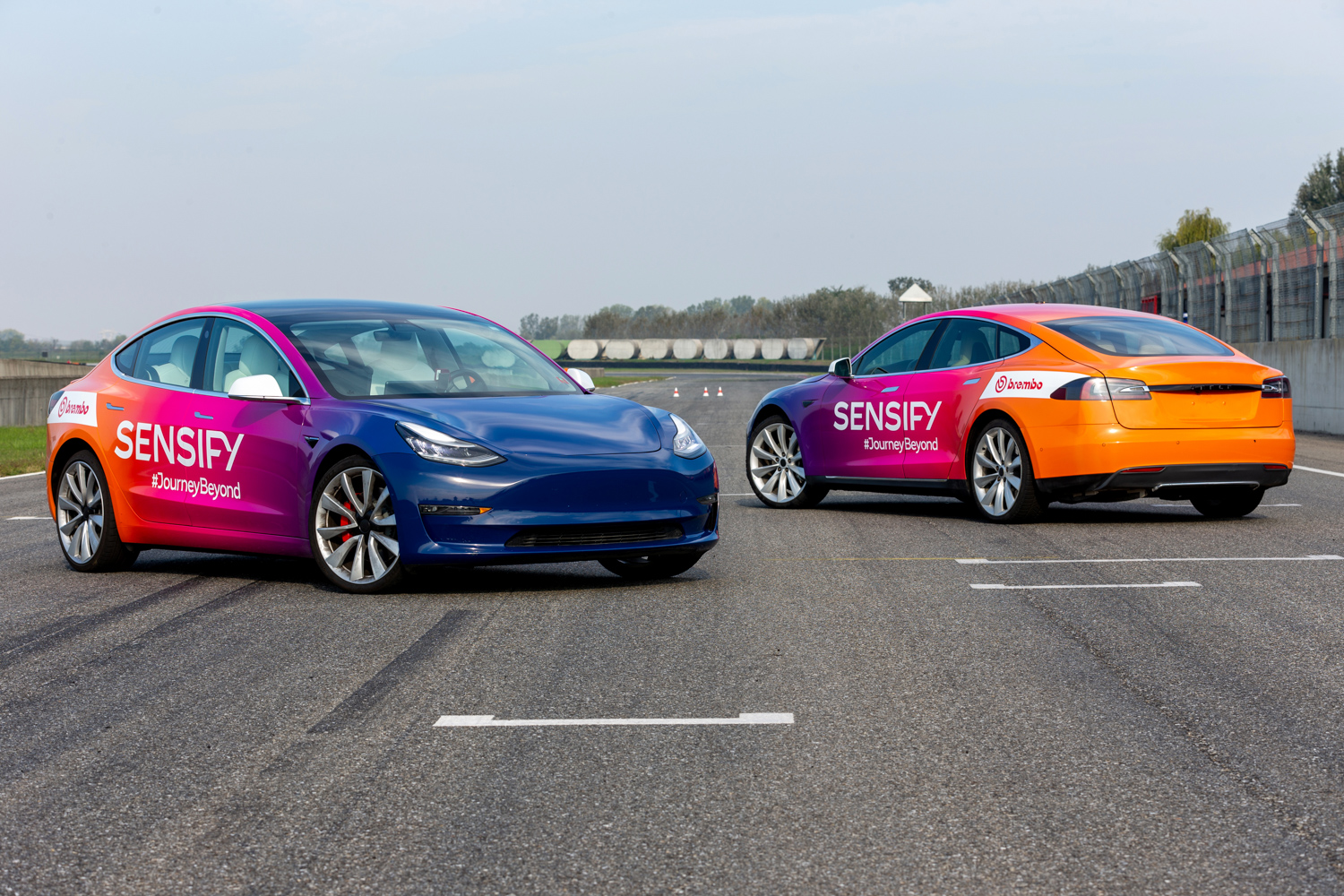The basic principles of modern braking systems haven't changed a great deal over the years, but Brembo is about to change that with its new technology that it calls Sensify. Although Brembo says that it isn't a brake-by-wire system, it does primarily use software to control an electromechanical setup that is designed to give greater braking performance while simultaneously being more efficient, with the added capability of adapting to numerous circumstances and situations.
To get a feel for how the system works, we travelled to one of Brembo's test tracks to drive cars with a standard braking system before then sampling ones that were equipped with Sensify. Brembo chose the Tesla Model 3 for this demonstration and, although the Sensify system isn't exclusively designed for electric cars, they will benefit the most from the new technology. It can also work with combustion engined cars, from superminis to hypercars, and has applications in the world of commercial vehicles, too. Brembo says that, in time, Sensify could be adapted to work with motorcycles.
How does Brembo Sensify work?
At the core of the Sensify system is a pair of control units, one on each axle of the car. These are connected, but as a failsafe they are designed to operate independently, so if one were to stop working the braking system is unaffected. When the driver presses on the brake pedal, rather than activating a booster to push brake fluid to the calipers, a sensor sends a signal to the control units. A 'pedal feel simulator' provides the same feeling as a hydraulic pedal so that it behaves in a way that will be familiar to drivers.
The control unt is the clever part as not only does it distribute the brake signal to each wheel, but it also draws in numerous data points from the vehicle including speed, direction, steering angle, pitch and yaw to help determine the best possible way to brake across both lateral and longitudinal axes. Electrical signals from the control unit operate hydraulic actuators on the front axle that work on each calliper. This is the only element of the braking system that uses hydraulic brake fluid.
A 'dry brake' used on the rear wheels consists of a new type of calliper design that is motor controlled rather than being reliant on brake fluid to push out pistons behind the pads. The entire braking system could use this format, but Brembo says that with larger calipers [on the front] it is more efficient to use a partially hydraulic design. On the dry system, further aiding efficiency, the pads do not have to be in contact with the disc surface when the brakes are not in use. This means that drag is eliminated, which reduces energy consumption and prolongs the service life of parts.
Speaking of servicing, Brembo claims that the dry brake requires no maintenance other than pads, as it is designed for the service life of the vehicle. Continual monitoring of wear means the system is able to adjust brake force distribution to even out pad life so fewer workshop visits are required. For fleet customers in particular this could be hugely beneficial as it lowers vehicle downtime. Brembo also states that the hydraulic element of the system does not necessarily have to use DOT brake fluid and could be replaced with a sealed-for-life alternative.
How the Brembo Sensify system performs
We begin with the conventional braking system in cars fitted with Pirelli winter tyres, and conduct a series of heavy braking manoeuvres on various low-grip surfaces, including wet asphalt and concrete, the latter to simulate heavy rain, and then a special artificial surface to replicate snow. Across each run the car performed largely as expected. On the lowest grip surface, simulated snow, the pulsing effect of the brake pedal as the anti-lock braking system fought to slow the car was pronounced, underlining how even the latest cars have limitations in certain conditions.
Taking to the Tazio Nuvolari circuit presented an opportunity to experience how a standard braking system can perform in high-speed manoeuvres and how it can play a role in affecting the handling characteristics of a car. After all, not all braking is done in a straight line. With mid-corner braking at 80km/h the car is immediately unsettled with noticeable weight transfer, though perhaps not as much in the Tesla due to much of its mass (the battery) being mounted low down in the vehicle. Corrective steering input was required to keep the car in the desired direction.
One of the final tests of the standard car involved a full emergency braking event on the circuit's lengthy straight, performed at 130km/h (the motorway speed limit in many European countries) and taking the car to a complete stop. This would typically only be done in an emergency situation, but it's something that all drivers should be able to experience safely at some point. Suffice to say, the Tesla pulled up quite well and without any drama.
After swapping into the Sensify-equipped Model 3 we first repeated the straight-line tests across different surfaces. The difference in braking performance was immediately clear. On the wet asphalt the car stops in a shorter distance without any other noticeable difference, but as we progress to the wet concrete the Sensify technology comes to the fore. Using the same speed and braking point as the first test the Tesla immediately bites harder under braking on the slippery concrete and seems to stop with a little more conviction.
A clearer difference in braking performance comes when we transition to the simulated heavy rain. The car's previous squirming and grabbing from the brakes is nowhere to be seen; instead the Model 3 slows to a stop in a linear and controlled manner, staying exactly in the same line with no steering deviation.
But the most profound example of the effectiveness of the Brembo Sensify technology comes when we drive the Model 3 onto the lowest friction surface. Whereas previously we had to experience the severe pulsing of the brake pedal and correct the steering, this time around the car demonstrated zero brake pedal pulse and brought the car to a dead stop not only in a dramatically shorter distance but also with no requirement for steering correction. It was as if the car was braking on dry ground. Such was the surprise at how different it was we repeated it several more times to fully comprehend the change.
High-speed braking
Impressive stuff in that situation, but taking to the track would reveal how Sensify can stand up to more challenging high-speed manoeuvres. We began with some mid-corner braking, the kind of thing you might have happen as you come around a blind bend and meet an obstacle. With the same speed and angle as before, the car quickly sheds its speed and this time there was no perceptible change in the car's direction or position. The steering appeared to be completely isolated from the braking forces of the car.
As we moved on to the high-speed emergency stop, Brembo's engineer explained how the Sensify system can reach maximum braking power in around 100 milliseconds (0.1 seconds), whereas a car's AEB (autonomous emergency braking) system can take an average of 500 milliseconds (0.5 seconds) to activate full braking force. As we brake there is indeed the sensation of a stronger braking force, and the visual markers indicate a reduction in stopping distance. At motorway cruising speeds Brembo says there can be as much as a ten-metre reduction in stopping distance, which could have significant safety benefits.
But there is more to Sensify than sheer braking force. Brembo says that the technology can not only react faster in situations where it may be used for autonomous vehicles, but it can improve vehicle efficiency as it removes drag on the disc and has the capability to increase energy recovery rates for electrified powertrains. Owners of cars would also be able to adjust the feel of the braking system via an app, and this could result in different setups between different drivers using the same car.
How the system monitors and adjusts to braking behaviour could also help fleet managers identify inefficient drivers. But it can also help those drivers, for example in the case of delivery vehicles that may start off a shift with a full or heavy load: as this weight decreases over time the brake pedal feel remains consistent as the system adjusts to changes.
The Brembo Sensify system is most impressive at how it improves braking performance, let alone the additional benefits that it can bring as outlined above. The company has confirmed that one car maker will introduce the system into series production in 2024 and Brembo's CEO, Daniele Schillaci says that another is likely to use the system later that year. For commercial reasons it has not yet been revealed which manufacturers and whether they will use the Sensify branding or an alternative name of their choosing.
"By introducing Sensify, Brembo is pushing the boundaries of what is possible with a braking system, opening up entirely new opportunities to drivers to improve their experience on the road and customise brake response to their driving style. Sensify gives drivers the peace of mind they are looking for," says Schillaci.
Our first experience of the system suggests that it could be a game-changer for braking technology and vehicle efficiency, but the overriding benefit will come from the increased safety that it can provide. An understandably proud Brembo expects its system to become the new standard for braking systems and potentially even lead to reductions in insurance premiums for vehicles that are equipped with it. Time will tell on both of those counts, but what is certain is that the Brembo Sensify technology marks a new chapter in braking performance.

